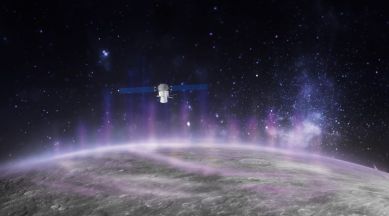Electron rains on Mercury cause X-ray auroras, finds BepiColombo during close flyby
During a close Mercury flyby, the BepiColombo spacecraft collected data that showed how electrons raining down on the planet's suface are triggering X-ray auroras.

People living in some parts of the world are fortunate enough to view the dazzling display of lights that we call auroras. Interestingly, electrons raining down on the surface of Mercury, the closest planet to the Sun, seem to cause X-ray auroras.
Auroras on Earth are triggered when a stream of charged particles emitted by the Sun interact with the ionosphere, the electrically charged upper layer of our planet’s atmosphere. But Mercury has a very thin atmosphere and auroras on the planet are created when solar wind, the stream of particles, interact directly with the planet’s surface.
BepiColombo, a joint mision by the European Space Agency (ESA) and the Japanese Aerospace Exploration Agency (JAXA) helped scientists discover that electrons raining down on the planet’s surface can cause high-energy auroras.
“For the first time, we have witnessed how electrons are accelerated in Mercury’s magnetosphere and precipitated onto the planet’s surface. While Mercury’s magnetosphere is much smaller than Earth’s and has a different structure and dynamics, we have confirmation that the mechanism that generates aurorae is the same throughout the Solar System,” said Sae Aizawa, lead author of a study published in Nature Communications, in a press statement.
The BepiColombo spacecraft carried out its first close Mercury flyby on October 1, 2021. At the time, the spacecraft approached the planet from the night side of the northern hemisphere and made a close approach near the morning side of the southern hemisphere. It made observations of the magnetosphere on the daytime side of the southern hemisphere and then passed out of the magnetosphere back into the solar wing.
The spacecraft’s instruments observed the structure and boundaries of the planet’s magnetosphere and its data showed that it was in an unusually compressed state. The most likely explanation is the high pressure exerted by solar wind.
The “dawn side” of Mercury’s magnetosphere seemed to be accelerating high-energy electrons, which in the end rained down on the planet’s surface. Since there is no atmosphere to impede the electrons’ progress, they interact with the material on the surface. This process emits an auroral glow in the form of X-rays. According to the Europlanet Society, this is the first time the process of X-ray auroras on the planet has been explained.